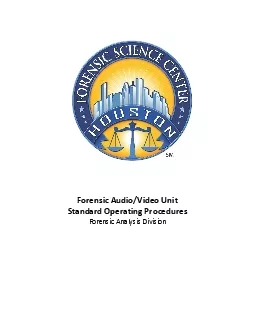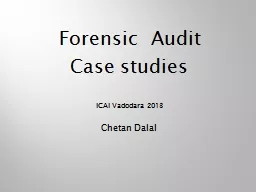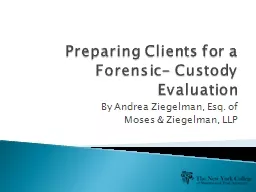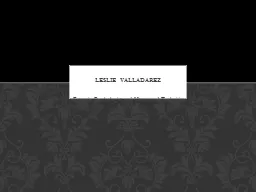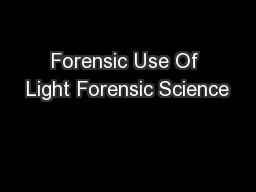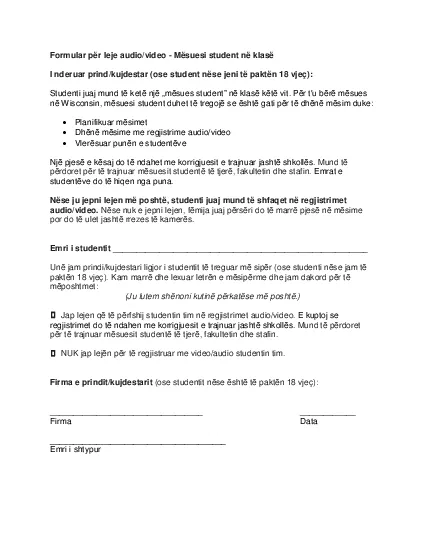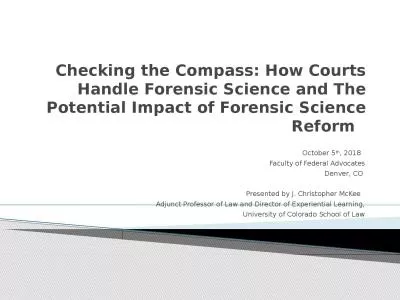PDF-Forensic AudioVideo UnitStandard Operating ProceduresForensic Analysi
Author : candy | Published Date : 2021-08-27
Forensic AudioVideo UnitTable of ContentsForensic Analysis DivisionTable of ContentsAdministrativeQualityAudio AnalysisDVR ExtractionMedia DuplicationFormat ConversionMedia
Presentation Embed Code
Download Presentation
Download Presentation The PPT/PDF document "Forensic AudioVideo UnitStandard Operati..." is the property of its rightful owner. Permission is granted to download and print the materials on this website for personal, non-commercial use only, and to display it on your personal computer provided you do not modify the materials and that you retain all copyright notices contained in the materials. By downloading content from our website, you accept the terms of this agreement.
Forensic AudioVideo UnitStandard Operating ProceduresForensic Analysi: Transcript
Download Rules Of Document
"Forensic AudioVideo UnitStandard Operating ProceduresForensic Analysi"The content belongs to its owner. You may download and print it for personal use, without modification, and keep all copyright notices. By downloading, you agree to these terms.
Related Documents

